#science fiction worldbuilding
Text
It sucks trying to date as a human on a planet where humans are a minority, and all of the dominant races are ones who've had limited contact with humans. Most alien cultures either think of humans as disunitied conquerors and raiders who subjugate other races, or as a diaspora who live on other species' planets and who are useally involved in the criminal underworld. So everyone who wants to date you has all these weird fetishes, about how they're getting to fuck this dangerous amoral space monster, and you're just like, a normal person. And like, people from the more common races where you live don't ever understand that.
Both people who want to be domed by you and people who want to dom you specifically focus on the fact that you're from an exotic race that most people think of as violent. Everyone either focuses on how weird and unique you are, or how dangerous you are. And like, even when you want to do something kinky you don't really want to focus on the fact that you're human. And there's really nobody who has any fantasies about you that are wholesome or soft, even when they don't mention that you're human they never think about being sweet or kind to you. It is what it is.
#196#my thougts#worldbuilding#writing#my writing#my worldbuilding#humans are space orcs#humans are deathworlders#humans are space oddities#scifi#scifi writing#science fantasy#science fiction#sci fi#short fiction#flash fiction#original fiction#scifiart#sci fi worldbuilding#science fiction worldbuilding
207 notes
·
View notes
Text
GROX EMPIRE LOCOMOTIVES

Art above by @dokupine!
The Grox empire has a very, VERY extensive railway system. Due to how many Grox are on each planet and how tightly interwoven their cities tend to be, Trains became the most efficient mode of transport for both passengers and goods.
Their headcode system is incredibly standardized and the same across all planets and colonies, Although branding and appearance can vary.
Most Grox trains are electric, Although a few models run on diesel.
#worldbuilding#daybreak#daybreak tag#sci fi#science fiction#scifi worldbuilding#science fiction worldbuilding#train#trains#locomotive#locomotives#spore#spore 2008#grox
53 notes
·
View notes
Text

Via print:

#art#digital art#aesthetic#scifi#cyberpunk#science fiction#sci fi#scifiart#futuristic#scifi art#sci fi and fantasy#sci fi horror#scifi aesthetic#scififantasy#scifiedit#scifi and fantasy#sciencefiction#science fiction art#science fantasy#science fiction author#science fiction worldbuilding#science fiction genre#futuristic architecture#futurism#space exploration#spaceship#space shuttle#space aesthetic#space art#not my art
21 notes
·
View notes
Text
I wrote this years ago about Worldbuilding
This is a repost from an old article I wrote on my ReshapingReality.org blog back in the day. This is the step-by-step process that I use in worldbuilding. You don't have to follow my process, but I figured it might be a good start for some writers.
To see my primary setting for my original science fiction stories as an example, I have imported 66% of my notes to my Elivera Wiki, and plan to finish importing my notes in the next year or two.
NOTE: To adapt these steps to Fantasy that has magic, the step for the magic system must include the rules of how the magic works, its strengths and weaknesses, its impact on the world/society/technology/people/culture, and its limitations. Technology is very similar in a way to magic as technology also has limitations, strengths, weaknesses, and impacts to world/society/environment/people/culture that needs addressed.
World-building 101 for Science Fiction
Whenever I world-build I start with the basics. First I need a solar system. You can take the easy way out and just use our home system, or you can build your own. If you wish to build your own, these are the steps to follow to create a fairly scientifically accurate system:
Determine what type of star will be the sun for your system. The star will determine where you can place your planet for it to be habital, it will also determine the color the star shows in the planet's skies, the radiation that impacts it, and other important attributes that effect the environment of the planet. See my blog entry here that discusses this in more detail: Worldbuilding Series Part One – a star
Once you have your star, you can focus on your planets. Read this for more information: Worldbuilding Series Part Two – the planets. To help you build both your star and planet, I’ve created a template for your world-building needs. Input in the data to have the spreadsheet generate some basic attributes that you can use in the astronomical data of your system: World-building template
Part of the process in creating planets involves the planet’s geology. The environment in which people live impact not only how they subsist but also how they build up their community, the types of buildings that would work well, what resources they have available, and how they use those resources. This post focuses more on terrestrial planets, but it does highlight some guidelines for gas giants as well: Worldbuilding Series Part Three – Planet Geology.
Now it’s important to focus in on the atmosphere of planets (if they have one) and their natural cycles. This impacts seasons, natural disasters, storms, weather patterns, long-term climate change, etc. All of which will impact the people who live on your planet. Here is my entry on this: Worldbuilding Series Part Four – Atmospheres and Natural Cycles.
The features of the planet will play a large role in the development of the sentient species’ culture and their evolution. This post highlights how to create features on the planet and how this process works: Worldbuilding Series Part Five – Geomorphology. It may be useful to take a look at my map-making post in order to create a map of the surface of your planet.
Finally, the sentient species themselves. If they are humans, this simplifies matters, and you mostly have to worry about how humanity adapts to the planet you created. This post discusses the effects of environment on a culture: Effects of Environment. You’d also have to consider the dynamics of diversity, which I highlight in this blog post (focusing more on a future earth dynamic but can be applied to humans migrating to new worlds as well): Diversity – Race. If you are creating a new aliens species, this blog post discusses some of the factors to keep in mind and offers some suggestions on how this can be done: The Science of Aliens.
Another important factor to consider is how language can influence a culture and its development. I discuss how language intersects world-building in this article: Languages and World-building. To help you create your language, examine these posts: How I craft a Language part 1 and How I craft a Language part 2.
Now remember each step above doesn't require indepth analysis and a million words of worldbuilding to complete. Sometimes all you need is some basic descriptions and ideas. From those you can then fine-tune what areas need more development so it can fit the needs of the stories you wish to write.
For example, you'll eventually need to write more about the following topics below, but focusing on which needs extensive development and which need only a brief primer can be difficult to decide! But the best way forward is to think about the stories you wish to write, and focus on the details you need to create a story that will immerse the reader in your world. Then develop those details.
Politics and Government
Diplomacy and Espionage
Economics
Education
Daily Life
Technology and Research
Cities and their infrastructure
Philosophy and Cultural Values (See this post: Thoughts on Philosophy within World building )
For some creative questions to delve deeper see: fantasy world-building question list compiled by Patricia C. Wrede. The above list compiled by Patricia C. Wrede is very much usable for science fiction writers — just focus on the questions that deal with creating a world and a culture and when you encounter the magic questions alter them to technology.
Maps
Another important aspect of worldbuilding is maps. Creating maps of your world and of your cities can be incredibly helpful with visualizing your world. It also helps track the character(s) journey across a region, the distances involved, the time needed, the environments crossed, etc.
For an example, I often create a zone map for my cities. Here is a detailed post on how to create a map: World-build: Maps
Character Design
This is just a placeholder for any primers I wrote for character design:
Primer for writing trans characters
Character Template
Resources
Books:
Wonderbook by Jeff Vandermeer
Worldbuilding by Stephen Gillett
Body Trauma: A Writer’s Guide to wounds and injuries by David W. Page, MD, FACS
The Writer’s Guide to Weapons by Benjamin Sobieck
Forensics for Writers by D.P. Lyle, M.D.
The Science of Aliens by Clifford Pickover
The Writer’s Guide to Psychology by Carolyn Kaufman, Psy.D
Space Travel by Ben Bova with Anthony R. Lewis
The Starflight Handbook: A Pioneer’s Guide to Interstellar Travel by Eugene F. Mallove and Gregory L. Matloff
The Language Construction Kit by Mark Rosenfelder
Advanced Language Construction by Mark Rosenfelder
Worlds of Wonder: How to Write Science Fiction & Fantasy by David Gerrold
The Planet Construction Book by Mark Rosenfelder
Building Imaginary Worlds by Mark Wolf
Revisiting Imaginary Worlds by Mark Wolf
The Kobold Guide to Worldbuilding by Wolfgang Bauer
On Writing and Worldbuilding by Tim Hickson
Classes/Podcasts
N.K. Jemisen's Masterclass on Writing and Worldbuilding
Roxanne Gay's Masterclass on Writing
Neil Gaiman's Masterclass on Writing and Storytelling
Levar Burton's Masterclass on Storytelling
WorldAnvil Worldbuilding Podcast
Writing Excuses Podcast
Worldbuilding Magazines Podcast
Brandon Sanderson's Writing Class
Worldbuilding Tips by Jenna Moreci
Common Worldbuilding Mistakes by Yinka
Overly Sarcastic Productions' Trope Talks
Feminist Frequency
Feel free to ask questions and share more resources or tips!
#Worldbuilding#speculative fiction#science fiction#Science Fiction Worldbuilding#Planets#geology#geomorphology#Various types of maps for worldbuilding#Resources on worldbuilding#worldbuilding tips#writing tips#writing#writing advice#sci fi writing#sci fi
17 notes
·
View notes
Text
If you need ranks for a fictional spy service, I suggest “agent”, “handler”, and “coordinator”, in ascending order. You might also have a lowest rank of “asset”, for people who aren’t actually members but are working with them.
#worldbuilding#scifi worldbuilding#science fiction worldbuilding#world building#fantasy worldbuilding#worldbuilding tips#spy fiction
20 notes
·
View notes
Text
welcome to moonfish
In CE 2650, Earth is not a utopia. But it is vastly changed from the Earth we know today. Plurigender and biosymbiotic, wrenched from the verge of climate apocalypse through eco-scientific innovation, the world looks different, sounds different, and feels different. How did we get there from where we are now?
Answer: a fuckton of research.
This blog is a home for my research for a long-term science fiction worldbuilding project about the evolution of a science fiction Earth in CE 2650, to be created over a series of short stories and possibly novellas. It investigates questions about personhood, gender, language, and the separation between humans and nature.
Most blog content will be research tangents, because why not share the deep dives into wildly different topics this world takes me on?
#worldbuilding#world-building#world building#science fiction worldbuilding#sci-fi worldbuilding#sci fi worldbuilding#scifi worldbuilding#moonfishlagoon
13 notes
·
View notes
Note
Do you ever have a passive gripe with the way trade is represented in medieval/sci-fi/post-apocalyptic fiction? I can't shake the feeling that those are societies that have moved beyond the need for abstract currency - that such forms of trade are more a concession for the viewer to analogize trade to our world instead of offering some kind of unique barter for a world.
A medieval peasant isn't gonna want gold coins for jack because the next trade caravan is two seasons away, they'd much rather a useful tool or some extra fertilizer. Credits in science fiction universes can become worthless due to Future™️ hackers setting their bank accounts to extraordinarily high values, so extra parts for firearms and spaceships are much more useful. Caps in Fallout just make no sense in a world where food and water are few and far between!
I feel unreasonably grumpy about this and I wanted to know if you have any kind of insight to this kind of thing.
There are a couple of only partly related problems here:
1. The idea that the economies of most sci-fi and fantasy settings, as depicted, don't make any sense. This is absolutely true, because most science fiction and fantasy authors don't really think about that sort of thing – their settings only have economies to the extent that the details of those economies are relevant to the plot, which they usually aren't.
2. The idea that it doesn't make sense for currency to exist in these settings because most of them logically ought to have barter economies. The trouble with this assertion is that there's no such thing as a barter economy. Yes, you can describe what one would look like, but no civilisation which has ever actually existed has operated in this fashion. It's a made-up idea – at best, a spherical-cow approximation of how the exchange of goods and services operates in a stateless society, and at worst, complete bullshit.
Consequently, whether or not it makes sense for anything like currency to exist is going to depend on the particulars of how the setting's economy operates (i.e., all the details that that are getting glossed over in point 1, above). About the most we can say in nearly all cases is that we simply don't have enough information about a given fantasy or sci-fi setting's economic structure to know whether it makes sense to have currency or not; we can't just assume in the absence of further details that things will default to a barter economy, because – again – there's no such animal.
#media#tropes#fantasy#science fiction#sci-fi#gaming#video games#tabletop roleplaying#tabletop rpgs#worldbuilding#game design#economics#politics#swearing
2K notes
·
View notes
Text

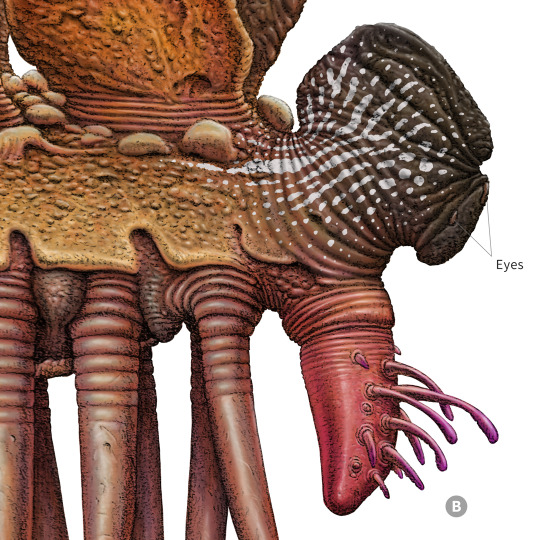



A Giant Forest Walker
#art#alien#space#creature#astrobiology#creature design#artist#exobiology#speculative evolution#worldbuilding#science fiction#scifiart
759 notes
·
View notes
Text
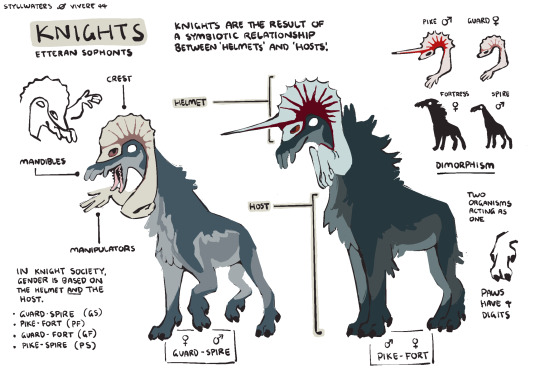


Hailing from the harsh planet of Ettera, Knights are the only sophont in the Zhagaviit system made of two consciousnesses.
---
At last, here they are! Nearly finished with redesigning every Vivere 44 species. These guys are retconned werewolves which I posted about some time ago. You might have noticed I brought back some space unicorn aspects as well! They've been through so many design changes but I've finally settled on something solid.
More information below!
I'll try to keep this concise. Most of this info is introductory biology.
Knights are the only sophonts living on Ettera, a mostly barren planet where survival is tough. Their civilisation is the least advanced compared to others in Zhagaviit, such as Arrows and Sea Crawlers. They were the third species to be contacted by the ZGC (Zhagaviit Galactic Community) followed by Post Humanity. Knights are known for being hardy, efficient, and motivated.
If it isn't already clear enough, Knights are two species in a symbiotic relationship acting as one individual. Helmets and Hosts have an evolutionary history so intertwined that one cannot survive without the other.
The Helmet is attached to the head of the Host, and will remain there for the rest of their life (unless separation happens - but we'll get into that later). In the relationship, their role is vision and dexterity. Since the Host is effectively blind, it is the Helmet's job to guide them. Their hands are also important, being the Knight's primary manipulators. They played a large part in early tool use. The Helmet lacks a mouth, and receives all its nutrients from the Host through a specialised organ not unlike an umbilical cord.
The Host is essentially the main body of the Knight. Wolflike and mammalian in nature, the Host is the Helmet's mode of transportation. Because they need to eat for two, Hosts are omnivorous and will eat just about anything. Although majority of their diet is comprised of meat, they are capable of digesting plant matter and bones. They are highly skilled and effective hunters.
It is in both party's best interests to assimilate as soon as possible. The Host cannot see without a Helmet, and within a few weeks bonding will become impossible. The stakes are higher for a newborn Helmet, because they cannot feed by themselves and will starve in under a week without a Host or an artificial feeder tube. Prior to first contact with the ZGC, Knights did not have the technology for artificial feeders, and infant death rates were high.
So how do two beings coordinate one body? The fact is that once assimilation occurs, they become one being. The Helmet's brain and the Host's brain are connected by millions of nerves exchanging signals. It's complicated, but the best way to describe the experience would be a 'mutual trance' in which full body coordination is achieved. They have shared interests and intentions. However, a Knight can mentally separate the Helmet and the Host, gaining back individuality; they do this for many reasons, perhaps to discuss something among themselves or simply for company. Yet on the whole, a Knight will spend 80% of their life in this 'trance'.
Both Helmets and Hosts have noticeable sexual dimorphism. Male Helmets are called Pikes, and females are called Guards. Pikes are distinguished by their horn, bold stripes, and more prominent crest spines. Guards lack a horn and have less contrast in their thinner markings.
Female Hosts are called Forts. They are larger than males and have a mane of fur on the back of their necks. Male Hosts, Spires, lack this mane.
In Knight society, individuals are usually referred to based on their combination of Host and Helmet. Since there are four sexes involved, there are four possible combinations.
Guard-spire [female Helmet, male Host]
Pike-fort [male Helmet, female Host]
Guard-fort [female Helmet, female Host]
Pike-spire [male Helmet, male Host]
(Knight languages have their own version of pronouns for each, but in English all are referred to as they/them by default. Of course, each individual has their own preferences. Usually a Knight will refer to themselves as we/us).
____
I'll get into Knight social structure, cultures and more in another post! For now, if you have any questions, feel free to send an ask. Always happy to answer!
#vivere 44#speculative biology#spec bio#my art#art#knights#aliens#speculative evolution#spec evo#xenobiology#artists on tumblr#science fiction#worldbuilding#headworld#its finally DONE
2K notes
·
View notes
Text

Industrial light ⚙
An experiment I made to see if I haven't forgotten how to make illustrations in my style.
Also it represents tovoxran cities' vibe and aesthetic (idk if it's cringe to use that word or not), basically steel beams, gears, metal scaffoldings and pipes everywhere. Just industrialism and utility.
The drawing itself is showing a heat generator in one of underground tovoxran cities on Tillturn (their homeworld). In the past they used to build their cities around active volcanoes or lava lakes for heat, because the whole cave system is cold, covered in ice and snow. Now they can build everywhere, as their technology allows that.
#myart#alien#alien species#original alien species#sci fi#science fiction#industrialism#illustration#speculative evolution#speculative biology#spec evo#spec bio#creature#creature design#worldbuilding#tovoxrans
671 notes
·
View notes
Text
There was someone singing in the greenhouse, someone with a pitch-perfect deep voice. Revati closed her eyes, pressing her ear against the glass door.
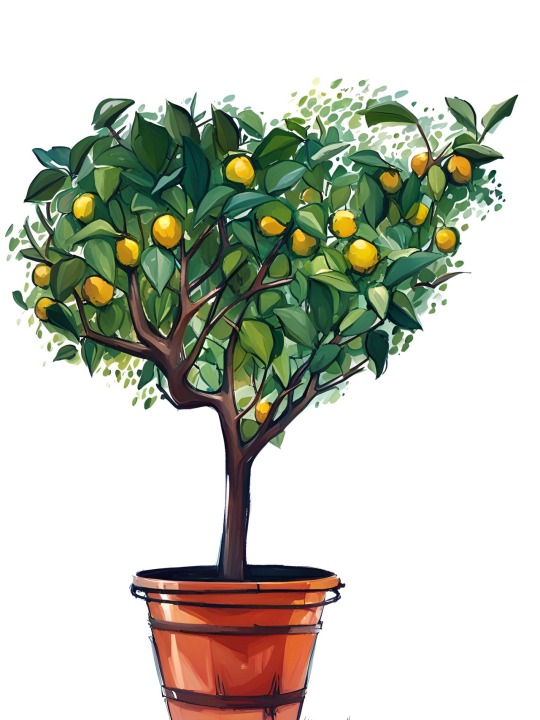
In a field where the paper daisies grow,
Underneath the sun's harsh glow,
I wander through, light and free.
Paper daisies, pink and white,
Your petals so bright.
I sing to you as the world beyond burns.
The smoke coils in the sky far above,
But your petals still dance around me.
Don’t be afraid; soon the rains will come.
Everything lost will grow again.
Paper daisies, pink and white,
Your petals so bright.
I sing to you as the world beyond burns.
The stars begin to rise,
My hands scooping your seeds.
Soon you will take flight
Towards the soft moonlight.
There was an old, prop piano in the abandoned Holly Bush Tavern. The only person who could play it properly was Mr. Gupta. During holiday festivals, he would coax melodies out of the sticky keys while Mrs. Gupta sang in a nasal voice. This was different. The singer’s voice filled Revati in a place she didn’t know was empty. The singing stopped abruptly as Revati’s weight caused the door to creak. Of course, the door creaked. The greenhouse was a wobbling claptrap box made out of welded-together old windows. Miss Grassroots, a tourist who had been dead for almost six years, had built it. Inside lay the heart of Baker Street. The heart had begun as a rose garden. Nanni was the one who began picking up the fallen red petals, drying them, and turning them into tea.
Revati only had vague memories of the first day of the invasion. Mrs. Grasston and Dusk had invaded the kitchens and gift shops. Together they managed to pool together seeds and cuttings in order to grow a small food supply. There was a wall of tomato vines, grown from several seeds found in old slices left in the bin. There were the garden beds where the potatoes and carrots grew. In fact, the potatoes were what kept Baker Street from starving to death. Next to one of the largest windows, the herb and weed boxes grew. Revati’s father was the one who ripped open gourmet tea bags in their home, discovering dried seeds inside. Bridgadeiro Bun was sitting under the lemon tree. “You’re a pretty good singer,” Revati said gruffly. “I was just trying to cheer up Deshia; she’s been feeling a bit depressed lately,” Bridgadeiro said, patting the tree's trunk. “Who’s Deshia?” Revati asked, faintly confused. “The lemon tree, of course! She said nobody's chatted with her for years,” Bridgadeiro said. Suddenly, the tree shook its branches, causing a fresh lemon to fall into Bridgadeiro’s lap. “Thank you for the gift, sweetheart,” Bridgadeiro said, patting the tree again. Revati stared at the lemon tree, not quite sure what to think. Could a tree really be depressed? It would explain why the lemons were so withered and small.
“All Buns speak plant; it's the same gene that causes our pink hair," he said. Revati glanced around, her eyes briefly falling on the giant pumpkin vine near the door.
"Are the plants talking right now?" Revati asked curiously.
"Most of them fell asleep hours ago. When they were awake, they just kept jabbering on about a golden lady," Bridgadeiro remarked.
"So, the lemon tree is depressed? I could get Aurora to come in here and read to her," Revati conceded.
"It's more than that. She misses the lady who planted her; she doesn't understand why she vanished and never came back," Bridgadeiro remarked. Revati found her hands stroking the book of fairy tales nervously.
"If she's talking about Mrs. Grassroots, she died," Revati replied flatly. Six years ago. Six years ago, there were over a hundred tourists living on Baker Street. Nanni, who had spent years living with mother, insisted on moving into an abandoned hat shop near the edge of the park.
The day the tornado hit was the same day Nanni decided to tell Revati all about her family history.
"I always carry the death stone in my handbag, along with everything else I'd ever need in an invasion," Nanni pointed out. Technically that was true; Nanni's giant handbag was filled with almost anything.
Outside, Revati could hear her father trying to roll down metal shutters. There was the sudden horrible roar, and Nanni's wall exploded in a cloud of rubble.
"A lot of people died," Revati finished, her voice trailing off. First came the tornado that caused a gap in the mirror walls. Then the trickle of automatic vegetable cleaners who decided to exploit the crack. Finally, the battle on Mansfield Park between the cleaners and a group of tourists.
"The lady that planted this tree was actually a member of the Lost Princess rebel army; she convinced a bunch of tourists to fight with her," Revati remarked, shaking her head. Then she firmly opened the book of fairy tales.
"It looks like some people survived," Bridgadeiro replied.
"I don't want to talk about it; I just want to read! Here, you can read with me; you might like this story," Revati replied.
Once long ago, in a lost village near the foot of Mount Raya, there lived a special little girl. She was known for her kindness and her deep love for nature. Everyone in the village called her Naisha. Naisha had a special gift; she could talk to plants. The villagers often saw her whispering to the flowers; they adored her magical gift.
One day, Naisha learned about a legendary tree called the Kalpavriksha. The old ladies in the village whispered that it had the ability to grant any wish. Drought, fearsome and terrible, had swept through the land. Flowers withered, no longer able to whisper. Trees forgot their songs. Naisha decided she must seek out the tree and wish for one thing alone: rain.
"Wake up," a voice screeched, and Revati's eyes snapped open, the book of fairy tales tumbling onto the ground. Aurora was standing above her, the bright morning sunlight making her hair glow.
"Morning," Revati yawned and then jumped when she realized Bridgadeiro was asleep next to her.
Bridgadeiro slowly awoke, smacking his lips together.
"Juniper said you were in here; she never mentioned the boy," Aurora remarked coldly as Revati slowly stood up.
"Anna made him sleep in here; I must have passed out while reading," Revati said.
It was then that Revati realized Aurora was holding a tray filled with fresh strawberries.
"Hmph," Aurora said, shooting Bridgadeiro a suspicious look as he also stood up, patting the tree trunk.
"Let me guess, Queen Victoria sent these with an apology?" Revati asked.
"Yes, and a request to fill her vodka order," Aurora said, placing the tray on the ground.
"If she was really sorry, she'd give us a strawberry plant," Revati pointed out.
"Oh, you don't need one of those! You have the fruit," Bridgadeiro remarked.
"You can't just shove a strawberry in the ground and hope for the best; it rots," Revati replied. Bridgadeiro merely leaned down, examining the strawberries. After a few moments of careful examination, he picked up the biggest, brightest berry.
"You can; you just need the right formula," he said. He vaguely walked towards one of the empty garden beds that was going to be turned into an onion patch. Carefully, he dug a small hole and placed the strawberry inside before covering it in earth. Then, he reached into his massive jumpsuit pocket and this time pulled out a small vial of portable perfume.
"One pump should do it," Bridgadeiro remarked before pumping a cloud of perfume onto the soil. The earth began to twitch and vibrate, and Revati gasped as greenery sprouted from the soil. The plants quivered and then twisted as white flowers bloomed. The petals then shriveled and fell off as the center of the flowers grew into green berries. A few seconds later, the berries blossomed into a deep red.
"They shouldn't be doing that! Strawberries take two weeks to grow," Aurora gasped.
"I suppose they would in the wild, but I just gave them a pump of my Gene Grow fusion serum!" Bridgadeiro said, leaning down to examine the strawberries.
"They should produce fruit every day, but only if you talk to them nicely," Bridgadeiro added as he picked a strawberry and handed it to Revati.
Revati sniffed it suspiciously before taking a tiny bite. It tasted just like a strawberry.
"Does that stuff work on all plants?" Revati asked curiously.
"It tends to go a bit haywire when you spray it on legumes; you end up with giant beans that have no nutrients," Bridgadeiro said.
"I saved your life; think it's only fair you spray all the plants in here," Revati said firmly.
"It would be better if I planted their seeds outside and created new crops; otherwise, the rapidly growing plants could burst outside the walls," Bridgadeiro replied. Revati nodded crisply.
"I'll be sending someone to check on your efforts later today; I'll be far too busy working," Revati replied with as much dignity as she could muster in a sleep shirt before marching out of the greenhouse. The book of fairy tales lay abandoned on the ground.
Revati carefully changed into her work uniform. When she was a child, her wardrobe consisted of souvenir t-shirts from the gift shop fashioned into dresses. Now that she was almost an adult, Revati had to get creative.
Most of the gift shop sweatshirts had been swiped long ago. Instead, Revati put on the top half of the cafe's old uniform. It consisted of a magenta and purple striped waistcoat with a navy blue blouse covered in tiny clocks. The bottom half should have been a matching bustle skirt. Revati switched it with the men's purple trousers. Revati then carefully redid her braid and applied some more soot lipstick. Aurora, still wearing the same clothes from yesterday, was waiting for her in the kitchen.
"You're wearing your second best outfit," Aurora remarked.
"I suppose I am," Revati replied as she grabbed her coat.
"I thought you said you were done with romance after that whole mess with Little Hardi last summer," Aurora said, and Revati stopped walking.
"I am!" she protested, and Aurora pressed her thin lips into a disapproving frown.
"You were sleeping with him."
"God forbid I fall asleep next to another human being," Revati said as she marched through the cafe past Nanni, who was sewing something.
"You kept him! You gave him a job," Aurora added knowingly.
"I didn't keep him! He's not a feral child; he can leave whenever he wants," Revati snapped as they stepped outside, and she put on her sunglasses. Olde Landon was always at its worst in the morning. Like all major tourist attractions and cities, Old Landon had an atmospheric blanket high above the park's surface. It meant that nobody in the park froze to death at night, but it also meant the morning light was far too bright.
"Is that Little Hardi and Queen Victoria standing next to the fountain?" Revati sighed wearily.
"They both arrived at sunrise; I told them you were busy, so your mother made them breakfast," Aurora remarked.
"Sunrise; of course, they sacrificed sleep so they could get here first," Revati remarked, marching towards the two other leaders. Queen Victoria was wearing one of the park's costumes, a stained white lace wedding dress. Little Hardi, on the other hand, was wearing a deep blue doublet with a ruff collar and matching tights.
"Little Hardi, is your brother still unconscious?" Revati greeted him.
"We took a vote last night, and he played Macduff," Little Hardi replied.
Revati, who knew fully well what that meant, had to stop herself from flinching.
"You killed him? That's a little harsh," Revati pointed out.
"It was for the best; we need a strong leader during a time of invasion," Little Hardi remarked practically.
"Time of invasion? Isn't that a little dramatic?" Revati had to ask.
"There must be another crack in the wall; thank Jane, it's probably not too big! You two would be far too young to remember the vegetable cleaner invasion," remarked Queen Victoria.
"I was twelve," Revati said dryly.
"I was fourteen; the tornado destroyed the Hamlet's haunted castle ride, and the appliances killed the actor playing Ophelia," Little Hardi pointed out.
"You're both still tiny children as far as I'm concerned; I can't believe this is who I have to work with," Queen Victoria replied, and Revati brushed past her with annoyance, heading to the dress shop across the street.
The shelves of the dress shop had long ago been stripped bare. All that remained were the three Penny Farthing Bicycles that had been part of the shop's window display. Revati wheeled her Penny Farthing outside only to see Queen Victoria having a heated discussion with Aurora.
"What do you mean she's going to ride to the wall by herself? All representatives from all towns should go!" Queen Victoria was screeching, slapping Aurora's shoulder with her fan.
Revati parked her bicycle and marched towards Queen Victoria, grabbing her hand.
"Slap my assistant again, and I'll break your fingers; you know I can do it," Revati growled.
Little Hardi, who was now sitting by the fountain, laughed.
"I was just speaking the truth! We have a treaty; during times of crisis, we unify," Queen Victoria said, her voice tight and a little frightened.
"I don't see Lady Morganna here," Revati pointed out, referring to the ruler of Medieval faire.
"You know perfectly well Medieval faire cut us all off after the tornado hit! They probably all died off years ago," Queen Victoria snapped back. Queen Victoria was right. Medieval faire was located in the center of a massive fake castle complete with a drawbridge. After the invasion, Lady Morganna had yanked up the bridge and refused to speak to anyone. Anna and Nanni had tried to visit several times with baskets of dried lemons. They were horrified when someone from above threw the contents of their toilets onto the streets.
"My new friend said he saw naked people in the wilderness dancing around a murdered television! Sounds like Lady Morganna to me," Revati merely replied, pointing to Bridgadeiro. Bridgadeiro, who was in the middle of taking several pumpkins out of the greenhouse, waved.
"Could be a coincidence; regardless, you are not going to the wall! We need to have a proper group committee meeting first! Then a vote," Queen Victoria's.
Revati just rolled her eyes and released Queen Victoria's hand, causing her to stumble and fall onto the floor. Revati then reached into her jacket, pulling out her stun gun, shoving it into the queen's stomach. The Queen made a faint whimpering sound as her eyes rolled backward, and she collapsed again. Revati then aimed the gun at Little Hardi, who held his hands up, protesting.
"I'm not going to stop you! I came here to propose marriage," Little Hardi insisted.
"Marriage? To me?" Revati asked dubiously.
"All kings need a consort, and I'm not interested in Big Hardi's husband," Little Hardi said, slowly getting down on one knee.
Revati stared at him and shook her head.
"I'm seventeen," Revati pointed out.
"Well, the wedding wouldn't be for another couple of years," Little Hardi replied.
"I thought we agreed to keep our relationship professional after the handkerchief incident," Revati pointed out, and Little Hardi held a hand to his heart.
"I told you dozens of times I had nothing to do with my brother's plot," Little Hardi insisted.
"He accused me of cheating on you using an old prop handkerchief as evidence, and you believed him despite it being the exact same plot of the play Othello," Revati pointed out. The entire incident occurred over a year ago and ended with Revati kidnapped and tied up on the stage in a white fluffy nightgown.
"I'm a very insecure person," Little Hardi pleaded. Dating while trapped in a fun park during the apocalypse was difficult. Before the feral children came along, Revati was the youngest person on Baker Street. All the teenagers in Whistleton were raised to be incredibly prissy. Most of them refused to do anything more than dance or hold hands. Little Hardi had been a fun, age-appropriate choice. Little Hardi was happy to do far more than hold hands.
"No," Revati said firmly.
"No? Really?" he asked, sounding faintly surprised.
"First of all, your legal system involves killing criminals on stage in the middle of plays, which is horrifying," Revati pointed out, and Little Hardi shrugged.
"Secondly, I'm not an idiot! You just want to marry me so you can take over our greenhouse," Revati pointed out, and Little Hardi gasped as if looking deeply insulted.
"That's not true! If hairs be wires, black wires grow on her head. I have seen roses damasked, red and white, but no such roses see I in her cheeks," Little Hardi pleaded as Revati climbed onto the penny farthing.
#nanowrimo#nanowrimo2023#science fiction#speculative fiction#speculative worldbuilding#futurism#sci-fi#creative writing#scifi story#science fiction novel
807 notes
·
View notes
Text
There are massive warships. Things that are the size of stations but that can move more swiftly through hyperspace and real space than any other object created by humans or gods. They're not like the warships you imagine, they're like entire divisions of the military, some of them have the populations of small planets, the largest of them have populations higher then earth had before industry came to it.
It only takes one of these ships to comquor a system. Though they often have smaller ships swarming them, like the microorganisms on your skin. And when they fight eachother, holes are torn in hyperspace, and heavily bodies become asteroid belts. Even the weapons that can destroy planets can't take ships like this down in one hit.
Inside the ships are entire societies, of humans, cyborgs, robots, and strange organisms generated by human science. Many of them soldiers who exist to serve as the ships troops, especially since a boarding action is the fastest way to take them down, but many are there for other reasons. You need an entire society to support a ship like that and all the troops it can carry, from workers who maintain the ship, to traders who bring new recourses on, to artists and teachers and lawyers and all the other things that end up as needed when there's that many people.
Some of these ships are so large and so deep that there are people on there who've never seen the world outside their machines of war. And some isolated parts of those ships, who've been within the depths of the endless machinery for so long, that they've lost contact with the more outwards facing parts of the ship society. Tribes and towns within the dark mechanical labyrinth who don't know they're on a warship, who don't even know planets exist.
And they say, that as the loyalty of a ship fades from the empire that built it, that the ship may come to be controlled by many nations, vying for control of the ship's flight. They say that within the depths of some war ships, wars are fought.
#196#my thougts#worldbuilding#writing#my worldbuilding#my writing#original fiction#flash fiction#short fiction#short story#scifi#scifi writing#scifi worldbuilding#science fantasy#science fiction#sci fi#science fiction writing#science fiction worldbuilding#space#deep space exploration#far future#spaceship#spacecraft#space exploration#outer space
160 notes
·
View notes
Text
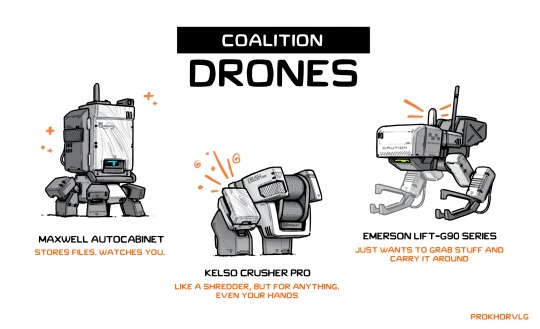
These goobers love doing their little jobs. Note the wood paneling for premium feel ✨
503 notes
·
View notes
Text
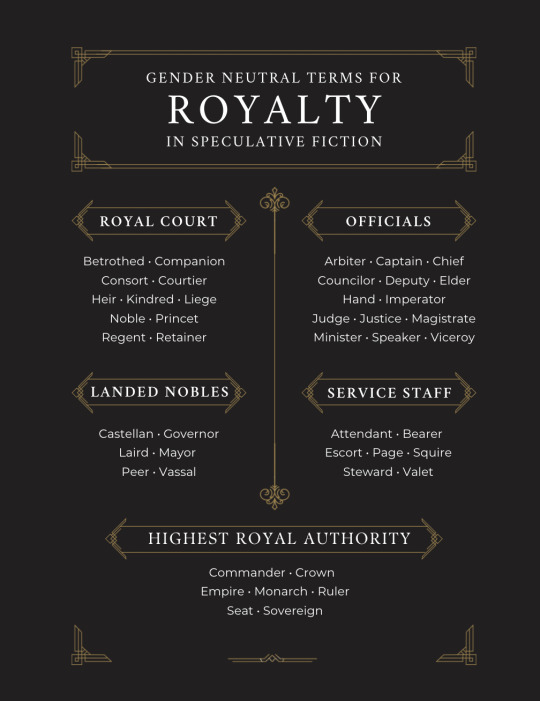
I was inspired by @jezifster's recent question about non-gendered royal titles, and I put together this graphic to serve as a jumping off point for people writing monarchies in SFF !
Obviously this non-exhaustive list contains mainly western titles, all in English. Feel free add any on additional gender neutral terminologies that you can think of, including those from different languages and cultures!
A small addition: I'm not a linguist or historian and put this list together based on some quick googling! While you're free to flex the usage and meanings of these words however you choose, researching the real-world context of each term before using them in your own writing is a best practice.
#writeblr#non-gendered language#gender neutral terms#royalty#nobility#language#fiction#dnd#ttrpg#fantasy#science fiction#im sorry lol i just love making lists#worldbuilding#lgbtq
9K notes
·
View notes
Text
Geology and the Economy/Trade in Your Fictional World: Explained
Hi, I'm Bird. I am a geology Ph.D. student and I love reading fiction and playing videogames, however something that can really pull me out of a fictional universe is a lack of understanding of basic geology, and how that would influence your fictional world. Today I will cover geology that can effect trade, some landscape features, and construction!
Things that are typically necessary/desired in a fictional world are building materials, gemstones/precious metals, and fossil fuels/ sources of energy. However, a lot of these things are not found together, and they typically have some features to make them more distinct in terms of landscape, so lets talk about it!
Gemstones/ Precious metals and landscape features
Typically, gemstones can be found in two different rock types. The first is intrusive igneous rocks (magma that slowly cooled underground to form course-grained rocks like granite) and high grade metamorphic rocks (rocks that got put under intense heat and pressure under the earth's surface). Some minerals are more likely to form in particular conditions than others, but for the most part these minerals can be found interchangeably within both of these places. *Note: this is a gross oversimplification but we are starting small
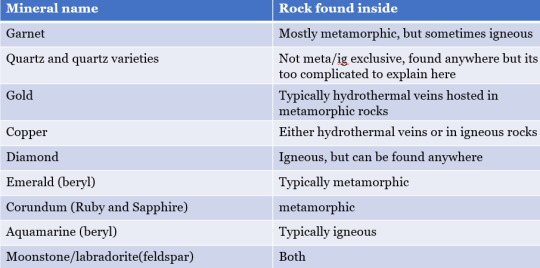
(Yes it is a shitty chart better pictures will come further in the post)
If you are writing these minerals based off and igneous deposit, good descriptions for the rocks would be speckled, with mineral grains of about the same size and varying in color. They should NOT be striated, and they will often form bald (unforested) cliffs that are typically rounded and not jagged.
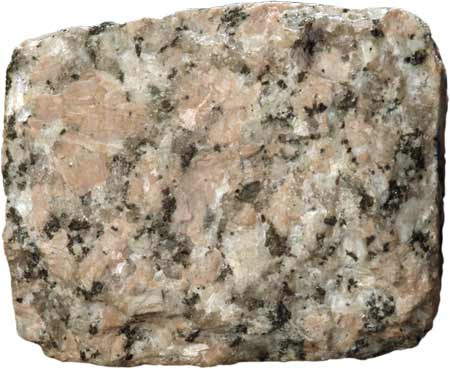

If you are writing with metamorphic rocks, you would expect these rocks to be layered, typically having light and dark layers with some minerals possibly being much larger than the others surrounding it. These textures can definitely (sometimes) be observed from a distance.

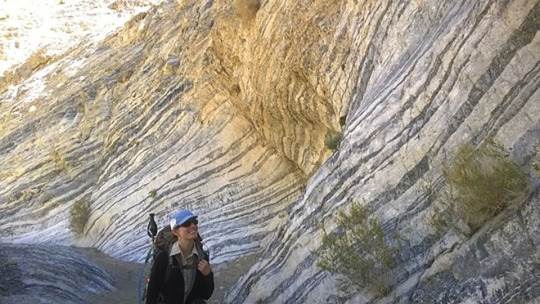
*Final notes about minerals* Quartz varieties are difficult, quartz can be found in volcanic, metamorphic, sedimentary, and intrusive igneous settings. If you are writing about agate specifically it is almost always volcanic in nature.
Diamonds are found in volcanic ash deposits called kimberlites, these deposits can occur in any rock type, so while they are igneous, they can be found anywhere. They have zero connection to the surrounding rocks.
2. Fossil Fuels
If a region is producing oil or coal, it is going to be from a sedimentary environment that is very rich in ancient plant material (like millions of years old). A unique feature of these locations would be finding lots of plant fossils, and rocks that can be found in association with these would be sandstone, shale, conglomerates/breccias, and limestones. Sedimentary rocks form in layers, so if exposed the layers will be very visible from a distance. You can also get unique features due to preferential weathering (fancy way of saying some rocks are harder than others, so when exposed to the same weather some rocks will break down faster than others). Also, natural oil seeps are a thing in places where natural oil is prevalent, but I couldn't find a good picture sorry.
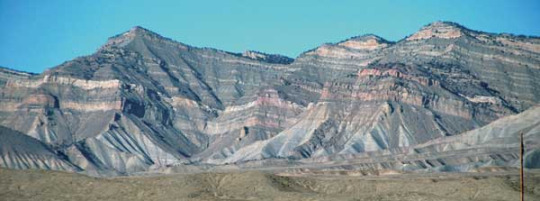
3. Building Resources
based on the rocks found in each region, the buildings will be made out of different materials, so lets breakdown what building materials would be used based off what rocks are present in the location.
Sedimentary rocks- lots of options here, so I will just info dump. If the region is drier, limestone is a good choice, historically may desert areas use limestone, it is soft and easy to carve, but it will dissolve slowly with rain. Sandstone is a durable rock that can be used, but it is very hard as it is made of quartz. Clay! shale breaks down in humid environments and will often make clay, this is a great, amazing building resource that could drive economy.
Metamorphic rocks- Marble.... if you want to make luxurious marble temples, metamorphic rocks are a must! Other comments, metamorphic rocks will often have layers of weaker minerals and stronger minerals, that means they will break along a defined surface. A lot of older houses in the Italian Alps (Aosta Valley) use these rocks for roofing. Slate roofing is also common in a lot of places, slate is formed from really low grade metamorphism, so this resource can be available in both sedimentary and metamorphic locations within reason.
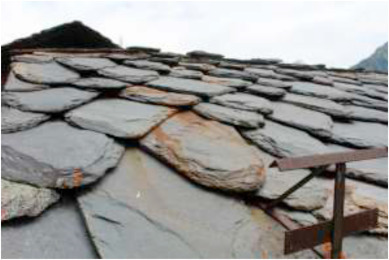
Igneous- Granite (light) and Gabbro (dark) is very hard and therefore it is used frequently in countertops today. This is also important because these rocks will take a high shine from polishing. Igneous rocks are also perfect for making cement! Volcanic ash mixed with quicklime and salt water is the recipe for roman concrete which is arguable much better than current day concrete but otherwise doesn't offer much more benefit.


Thank you if you made it this far, I want to make more guides in the future to hopefully cover more geology topics that can influence a story (possibly natural disasters and associated landscape features for subtle foreshadowinggggg)
This guide is very simplified! It is supposed to cover a lot of information for people who may not know a lot about geology, but are interesting in creating fictional universes! If you know a lot about geology already, please avert your eyes, or comment something additional!
#geology#rocks#science#creative writing#dnd#worldbuilding#writeblr#fictional world#dnd worldbuilding#writerscommunity#writing resources#writing tips#writing prompt#stem#worldbuilding stuff
499 notes
·
View notes
Text
If you want a corporate state/military in your SF, I came up with a somewhat streamlined version of the Japanese corporate hierarchy that could be a useful model.
Chairman
Division chief
Department head
Section manager
Team leader
Supervisor
Employees
Each (above employee, anyway) could also have “assistant” or “vice-” in between it and the next one down, if you want more ranks.
Notice that this also gives territorial divisions for a corporate state, or military units for a corporate military: branch/division, department, section, team.
#worldbuilding#world building#science fiction writing#writing scifi#scifi worldbuilding#science fiction worldbuilding
18 notes
·
View notes